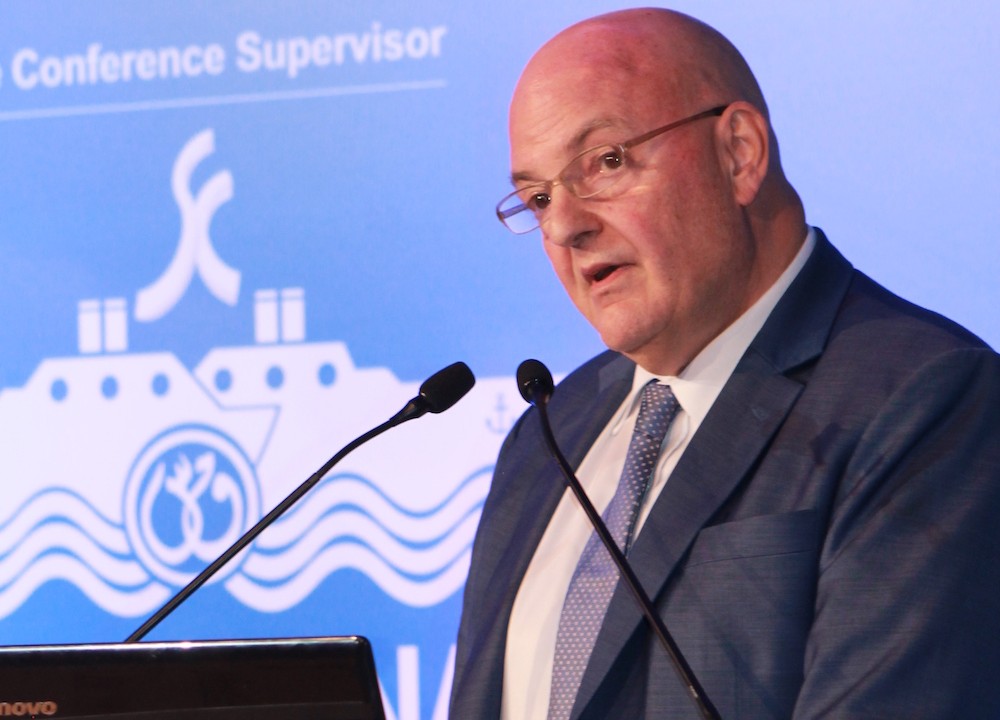Posted on: 23 February 2016
The new deeper Suez Canal will be a beneficiary of the ‘One Belt One Road’ initiative taken by China’s charismatic leader Xi Jinping, especially when it comes to the opening up of the Iranian market following the lifting of international sanctions and the moving into importance of the Indian refinery markets, according to Denis Petropoulos, President of Braemar Shipping Services Asia.
Speaking at the 1st Suez Canal Global Conference in Cairo, Mr Petropoulos said ‘One Belt One Road’ was not just about China but reached into around 60 countries: “many with increasing energy needs, and the Suez Canal playing its very essential part.”
Iran is probably the most notable frontier for new business within ‘One Belt One Road’, delegates were told. “Its trading alliances in Asia remain strong but with the lifting of sanctions the opportunities for Iran are opened further, with long standing historical trading partners in Southern Europe and their demand for Iranian crude oil, all likely to be transported through the Suez Canal and the Sumed pipeline,” said Mr Petropoulos.
“In the 1970s and 1980s, the trend for crude oil produced in the Middle East was for Western demand but by the turn of this century the trend reversed with Middle East producers supplying the East. However Middle East refineries are also producing products for the region and are now exporting large amounts of products to global destinations as profitable trade, as well as a hedge to reduction in OPEC crude quotas. North East Asia is also producing gasoil which will find itself in the West. Major traders are fixing new building aframaxes and suezmaxes to load cargos of gasoil from refineries in Japan and Korea all transiting the Suez Canal,” he said.
As Mr Petropoulos stressed, in addition, India’s refinery programmes in the private sector have been very forward looking and they now export products with limited or reduced refinery capacity, particularly in North West Europe. “Those cargoes will transit the Suez Canal. With the demand for power combined with emissions, the LNG space is growing significantly and there has been an increase in LNG transiting the Suez Canal in the last 10 years.”
Since the completion of the new dual carriage, the new Suez Canal will be able to handle almost twice the traffic, delegates heard. “And providing it remains commercially viable, this will lead to greater numbers of vessels navigating at both Suez and Port Said. In any environment where there is increased traffic there is increased risk of incident,” he warned.
Jeff Wilson, Director of Marine Consulting (Europe) at Braemar Salvage Association, told delegates that the planned increase in traffic that will come from the development of the ‘One Belt One Road’ “will inevitably result in more vessels transiting and awaiting transit of the Canal at either end, and this will require careful planning and handling to mitigate the risk of increased traffic.”
He said: “It may be useful at this point to remind ourselves of the most common types of marine casualty and consider how that feeds into a discussion on mitigating that risk. We’ve been gathering data on casualties since the business started, and we still maintain a casualty database that allows our friends and clients to accurately identify the risks that are relevant to their work or their projects. And our most recent set of data indicates that the top five casualty types across the insurance market remain the same as we would expect, with engine room machinery damage, groundings, fire/explosion and collisions and allisions all in the top four of all casualty types.”
According to Mr Wilson, combined, those four categories comprise approximately 65% of the entire casualty load of the hull and machinery (H&M) insurance market claims record over the past two years, and the longer historical picture is not too different.
“If we look at this over five years, we can see that the same dominant consequences arise when risk is not managed correctly. Looking at the cost element, we can see that the average cost of claims hovers around the $1m mark, with relatively minor variations over time.
“One notable feature of the data is that the cost of collisions has risen dramatically over time, and now comprises almost 20% of the total. If we assume that the number of collisions has a relationship to the number of traffic movements and the proximity of vessels in a given area, then it’s reasonable to assume that there would be an increase in collisions if the volume of traffic in a given location was to increase over time. Machinery damage and fire or explosion are not traffic dependent, but it’s reasonable to assume that collision and grounding incidents are and, consequently, there may be an economic impact on shipowners’ costs if they trade through an area of changing, increased and more densely packed traffic on a regular basis,” he said.
The economic impacts of collision and grounding are varied, but there are common issues for shipowners following these incidents such as the cost of dealing with the incident, which can be considerable depending on the specifics of the incident, its location, the availability of support and repair services, the availability of technical expertise to recover the situation and the wider network of support available to the owner.
Mr Wilson again: “Owners prefer not to have casualties because they take up significant management time and resources and can result in lost opportunities in addition to reputational damage. However, if an owner could choose to have a casualty he would prefer to have one in a location where there was a well-organised network of emergency response and possible pollution control, where there was access to quality repair yards with high quality labour at a reasonable cost and where movement of goods and services could be done rapidly and at low cost. Not all of those conditions exist in all locations, but even two out of three will reduce the immediate cost of the incident and consequently reduce long term costs.”




